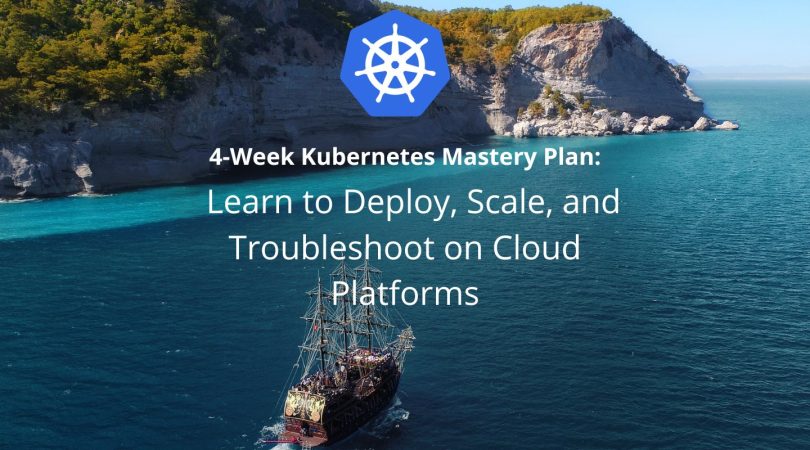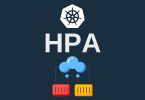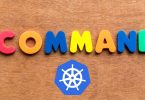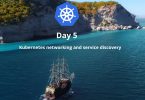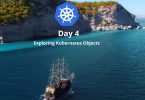Hey there! I know it can be overwhelming to try and create your own plan for learning something new, like Kubernetes. That’s why I’ve put together a study schedule to help make things a bit easier for you.
I understand that sometimes life gets in the way and it can be hard to stick to a plan, but with a little bit of organization and some helpful resources, you’ll be on your way to mastering Kubernetes in no time!
With so many books and learning methods available, it can be tough to know where to start, but don’t worry, I’ve got you covered.
I’ve taken into account that sometimes people forget what they learned during the course, so this schedule is designed to help you retain that information. I hope it proves helpful in your journey to learning Kubernetes.
Let’s do this together!
Week 1:
Day 1: Introduction to Kubernetes and its components (kubelet, kubeadm, kubectl, etc.).
Watch a tutorial or read an introductory guide on the basics of Kubernetes.
Review the architecture and key concepts of Kubernetes, such as clusters, nodes, pods, and services.
Day 2: Setting up a local development environment for Kubernetes.
This can be done using tools such as Minikube or Docker for Windows/Mac.
Learn how to start and stop a cluster, and how to access the cluster using kubectl.
Day 3: Deploying a simple application on a local Kubernetes cluster.
This can be done using an example application from the Kubernetes website or by deploying a simple web server. Learn how to create, update and delete resources using kubectl.
Day 4: Exploring Kubernetes objects such as pods, services, and deployments.
Learn how to create, update and delete pods, services, and deployments using kubectl and yaml files.
Day 5: Exploring Kubernetes networking and service discovery.
Learn about services, service types, and service discovery using DNS and environment variables. Learn how to create and configure services.
Day 6: Can be allocated to review and practice what you have learned in the first half of the week.
Day 7: Can be allocated to practice the above-mentioned topics and try to solve some real-world problem using kubernetes.
This plan covers the basics of Kubernetes, including setting up a development environment, deploying applications, managing resources and exploring networking and service discovery.
It should give you a good foundation to continue learning more advanced topics and working with Kubernetes in the future.
Practice, practice, practice
Week 2:
Day 8: Learn about Kubernetes security and access control. This includes topics such as authentication, authorization, and secrets management. Learn how to secure your Kubernetes cluster and resources using Kubernetes built-in security features and best practices.
Day 9: Exploring Kubernetes storage and volume management. Learn about different types of volumes, such as Persistent Volumes, Persistent Volume Claims, and ConfigMaps and how to manage them in Kubernetes. Learn how to create, update, and delete storage resources, and how to use them in pods and containers.
Day 10: Learn about Kubernetes scaling and self-healing. This includes topics such as horizontal pod scaling, auto-scaling, and liveness and readiness probes. Learn how to scale your application, and how to monitor and troubleshoot your application using Kubernetes built-in features and tools.
Day 11: Learn about Kubernetes advanced features, such as ConfigMaps and Secrets, Ingress, and Network Policies. Learn how to use these features to manage configuration, networking, and security in your application.
Day 12: Review and practice what you have learned in the second half of the week.
Day 13 can be allocated to review and practice what you have learned in the week.
Day 14 can be allocated to practice the above-mentioned topics and try to solve some real-world problem using kubernetes.
This plan covers some advanced topics in Kubernetes, including security, storage, scaling, self-healing and advanced features.
It should give you a good understanding of how to manage and deploy applications in production using Kubernetes.
Practice, practice, practice

Week 3:
Day 15: Learn about Kubernetes monitoring and logging. This includes topics such as setting up monitoring for your applications and cluster, using Kubernetes built-in features and third-party tools. Learn how to troubleshoot and debug your applications using Kubernetes logs.
Day 16: Learn about Kubernetes configuration management. This includes topics such as configuring your Kubernetes cluster, using ConfigMaps and Secrets, and managing configuration changes in your applications.
Day 17: Learn about Kubernetes deployment strategies. This includes topics such as rolling updates, blue/green deployments, and canary releases. Learn how to deploy and update your applications with minimal downtime and rollback capabilities.
Day 18: Learn about Kubernetes advanced networking. This includes topics such as Network Policies, Ingress, and Service Mesh. Learn how to secure and manage network traffic in your applications and cluster.
Day 19: Review and practice what you have learned in the third week.
Day 20: can be allocated to review and practice what you have learned in the week.
Day 21: can be allocated to practice the above-mentioned topics and try to solve some real-world problem using kubernetes.
This plan covers more advanced topics in Kubernetes, including monitoring, logging, configuration management, deployment strategies, and advanced networking. It should give you a good understanding of how to run and manage production-grade applications on Kubernetes.
Practice, practice, practice
Week 4:
Day 22: Learn about Kubernetes in the cloud. This includes topics such as using managed Kubernetes services offered by cloud providers (e.g. LKE, GKE, EKS, AKS), and deploying Kubernetes clusters on cloud infrastructure using tools like Terraform or Ansible.
Day 23: Learn about Kubernetes best practices and patterns.
This includes topics such as resource quotas, limit ranges, and network segmentation, as well as patterns for service discovery, configuration management, and deployment.
Day 24: Learn about Kubernetes troubleshooting and maintenance.
This includes topics such as debugging pods, services and deployments, troubleshoot networking and scaling issues and performing upgrades and backups.
Day 25: Learn about Kubernetes extensions and add-ons.
This includes topics such as Kubernetes Operators, Helm and Kustomize for managing complex applications, and Kubernetes Dashboard for monitoring and management.
Day 26: Review and practice what you have learned in the fourth week.
Day 27: can be allocated to review and practice what you have learned in the week.
Day 28: try to solve some real-world problem using kubernetes.
Alongside this, you should also practice the concepts you learned through hands-on exercises and labs. You should also try to find a way to deploy a real-world application on k8s cluster, it could be on your local machine or on cloud-based k8s clusters like LKE, GKE, AKS, EKS. You can also find some additional resources like blogs, videos, or tutorials to supplement your learning.
This plan covers more advanced topics in Kubernetes, including running and deploying Kubernetes on the cloud, best practices and patterns, troubleshooting and maintenance, and extensions and add-ons. It should give you a good understanding of how to run and manage production-grade applications on Kubernetes in a cloud-based environment.
Practice, practice, practice
Keep in mind
-
- Make sure to practice what you’ve learned as much as possible. Hands-on experience is crucial for understanding and mastering Kubernetes.
-
- Keep in mind that learning Kubernetes is an ongoing process, and there is always more to learn and discover.
-
- Join online communities such as Kubernetes meetup groups, slack channels or forums, and ask questions and share your experience with others.
-
- Try to find a way to work on a real-world project, it could be on your local machine or on cloud-based k8s clusters like GKE, AKS, EKS.
-
- Stay up-to-date with the latest developments in Kubernetes by following the Kubernetes project on GitHub, and by reading the Kubernetes blog and documentation.
-
- If you’re planning to take a certification exam, it would be helpful to take practice tests and familiarize yourself with the format of the exam.
Tips
If you’re a beginner looking to learn Kubernetes, here are a few tips that can help you get started:
-
- Start with the basics: Understanding the core concepts of Kubernetes such as clusters, nodes, pods, and services is essential. Read the Kubernetes documentation or watch tutorials to get a good grasp of the basics.
-
- Set up a development environment: Setting up a local development environment for Kubernetes is a great way to start experimenting with the platform. You can use tools such as Minikube or Docker for Windows/Mac to set up a local cluster.
-
- Deploy your first application: Once you have your development environment set up, deploy a simple application to your local cluster. This will give you hands-on experience with deploying and managing applications on Kubernetes.
-
- Practice, practice, practice: The more you practice, the better you’ll get at using Kubernetes. Try to find a way to work on a real-world project, it could be on your local machine or on cloud-based k8s clusters like LKE, GKE, AKS, EKS.
-
- Join online communities: Join online communities such as Kubernetes meetup groups, slack channels, or forums, and ask questions and share your experience with others. This is a great way to learn from more experienced users and stay up-to-date with the latest developments in Kubernetes.
-
- Read and learn from experts: Stay up-to-date with the latest developments in Kubernetes by following the Kubernetes project on GitHub, and by reading the Kubernetes blog and documentation.
-
- Certification: if you’re planning to take a certification exam, it would be helpful to take practice tests and familiarize yourself with the format of the exam.
Remember that learning Kubernetes is a continuous process, and it takes time to master the platform.
So, be patient and keep learning.
My thoughts
In conclusion, I have provided a comprehensive four-week plan to learn Kubernetes, covering topics from the basics to more advanced concepts. By following this plan, you should have a solid understanding of the core concepts of Kubernetes, how to set up a development environment, how to deploy and manage applications, and how to troubleshoot and maintain your applications.
Additionally, you should have a good understanding of running and deploying Kubernetes on the cloud, best practices and patterns, and extensions and add-ons.
This plan is designed to be a starting point for your Kubernetes journey, and there is always more to learn and discover. Keep in mind that learning Kubernetes is an ongoing process, and it’s important to continue practicing and staying up-to-date with the latest developments.
Joining online communities and working on real-world projects can also be helpful in expanding your knowledge and experience with Kubernetes.
It’s important to remember that hands-on experience is crucial for understanding and mastering Kubernetes. So make sure to practice what you’ve learned as much as possible, and don’t be afraid to ask questions and seek help when needed. With dedication and hard work, you can become proficient in Kubernetes and be ready to work with it in a production-grade environment.


